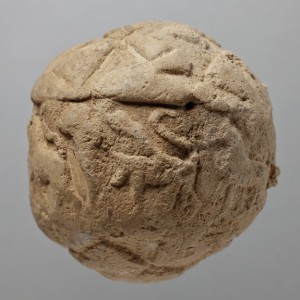What do the clay balls from Mesopotamia reveal? The researchers believe that they might have found an answer. They have discovered clues to a lost code that was used for record-keeping about 200 years before writing was invented. In fact, the researchers believe that the clay balls may represent the world’s very first data storage system according to Professor Christopher Woods of the University of Chicago. At a lecture at the Royal Ontario Museum and an interview with LiveScience, Woods further explained the new findings about the clay balls
 The researchers used high-resolution CT scans and 3D modeling to look inside more than 20 clay balls or “envelopes” – as researchers call them – that were excavated at the site of Choga Mish, in western Iran, in the late 1960s. They were created about 5,500 years ago at a time when early cities were flourishing in Mesopotamia.
The researchers used high-resolution CT scans and 3D modeling to look inside more than 20 clay balls or “envelopes” – as researchers call them – that were excavated at the site of Choga Mish, in western Iran, in the late 1960s. They were created about 5,500 years ago at a time when early cities were flourishing in Mesopotamia.
The balls were sealed and contain tokens in a variety of geometric shapes and varying sizes from golf ball-size to baseball-size. Researchers believe that the tokens which come in 14 different shapes, including spheres, pyramids, ovoids, lenses and cones, could have represented whole words, and that these shapes would have conveyed numbers connected to a variety of metrological systems used in counting different types of commodities. One ovoid, for instance, might mean a certain unit, say 10, which was used while counting a certain type of commodity.
It is important to point out that researchers have long believed that these clay balls were used to record economic transactions and that the tokens represent numbers and metrical units. This interpretation is also based on an analysis of a 3,300-year-old clay ball found at a site in Mesopotamia named Nuzi that had 49 pebbles and a cuneiform text containing a contract commanding a shepherd to care for 49 sheep and goats.
Professor Woods also commented that through the different token shapes, people in prehistoric times could have actually communicated numbers and units in a way similar to how the first scribes did 200 years later when writing was invented.















